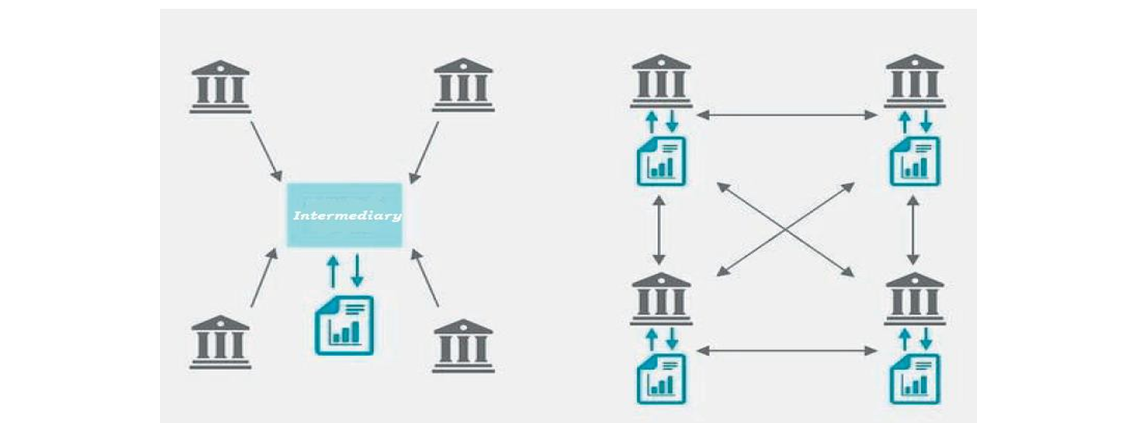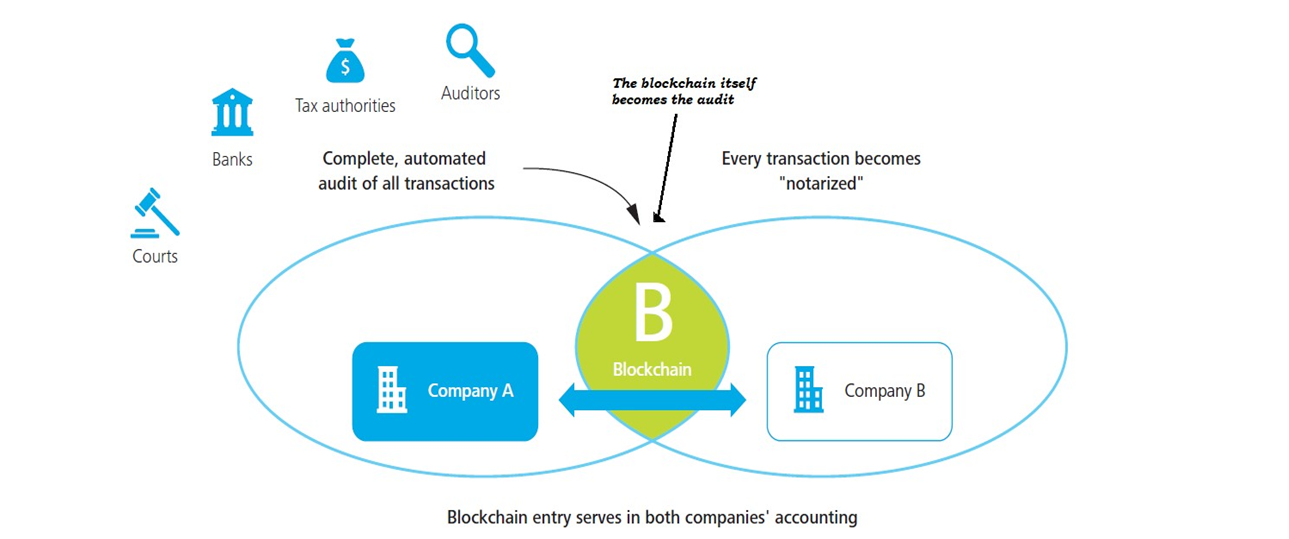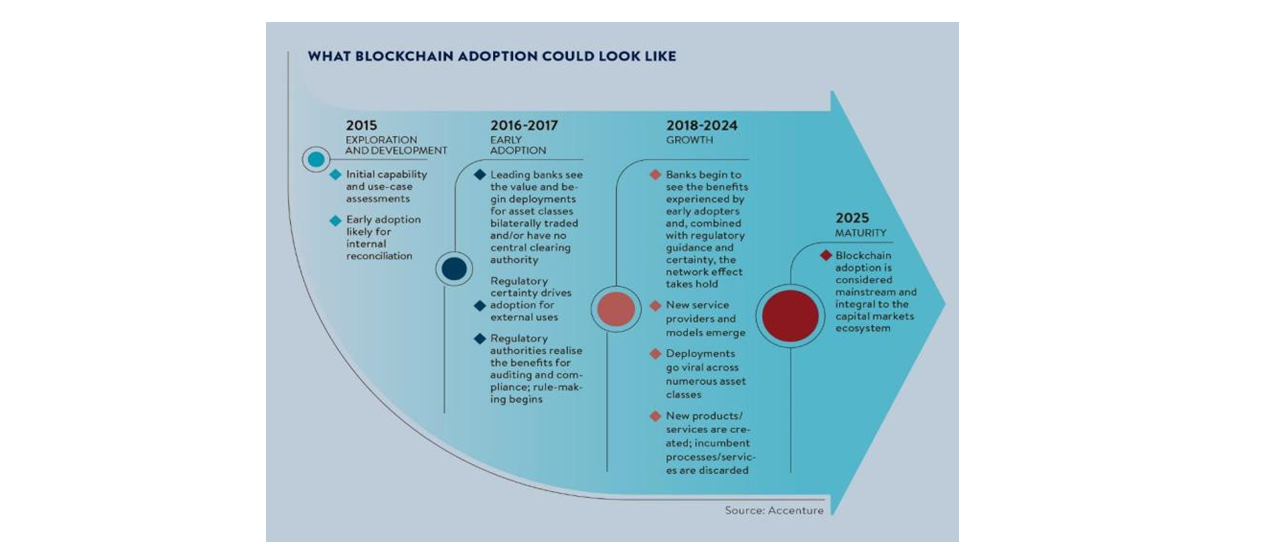Possible Future Applications of the Blockchain Technology

Abstract
Starting from cryptocurencies and inevitably going into one of the most disruptive technologies that will shape the way we exchange money, information and goods, the present article tries to explain how this new tehnological oportunitiies can come in response to businesses from all over the world by paving the way to a new fully digitalised economy in which smart contracts and the change of assets are managed trough a public ledger also known as a blockchain. The article aims at explaining what blockchain technology is and how it all started since 2009 with the arival of the bitcoin on the market and the other cryptocurencies that are taking the world by storm. Also, it presents what is today considered as posible regarding aplications of blockchain technology into business and by what extent, also considering possible future applications.
JEL Classification: E00, E69, F19, F10, L86
Table of contents
1. Introduction
2. Problem Statement
3. Research Questions/Aims of the research
4. Research Methods
5. Findings
6. Conclusions
1. Introduction
The 21 century brough us a multitude of disruptive technologies which substantialy change the way people and corporations are connected and interact on a daily basis (Peters & Panayit,
2015).
One of this technologies is the criptocurency, more precisely, the bitcoin, which strongly modifies the way people trades at a global level, in strong corelation with the shift towards adigital economy and the tranzition from tangible assets to nontangible assets.
The way cryptocurrencies work is poorly understood by most of the people in the business world, given that understand how they appear get sent within the public ledger requiers a good understanding of some criptic algorithms. Even so, because of their fast growth in value, especialy bitcoin which in 15 december 2017 hoovered at around 17,900$ (Jemima, 2017), they gained imense popularity worldwide.
However, even though cryptocurrencies have the ability to fundamentaly change the way companies trade from now on, the objective of the present article is to present a brief understanding of how the technology thet gave birth to criptocurencies, commonly known as blockchain, will change the business world and the society as a whole.
2. Problem Statement
Bitcoin is the first exemple and the most notorious of all cryptocurrencies; it first appeared following a white papper written by a group of hackers going by the named of Satoshi Nakamoto (Chen, 2016) in 2009.
Criptocurencies may represent the biggest step in the evolutions of online payments given the fact that thei are the first exemple of „money” that is not emmisioned or controlled by a government or a bank, their creation beeing the result of activitiese known as mining, which rely on solving complex mathematical criptic problems, with the computing power of computers.
Also, by miming, the process of verifying and authentifying takes place inside the publick ledger, known as blockchain. Basically, cryptocurencies represent a form of money which exist solely as information, and do not present any other form of existence. (Vlasov, 2017).
The way cryptocurrencies are secured, and the fact that every transaction that uses them are registered almost immediately inside the public ledger, laid the foundation of a new way of trading, much more efficient and transparent than the way we do business today; with this technology beeing able to spread across multiple business domains.
So,after almost six years after cryptocurrencies first appear on the market along the concept of decentralisation which implies eliminating any kind of middleman such as governments or banks in this case, we can observe the blockchain can be used not only for cryptocurrencies, but to register and confirm any kind of contract, monetary system or property (Johansen, 2018).
In simple terms, blockchain represents a public ledger or some form of chronologicaly ordered database in which transaction are registred simultaneously by a network of computers known as nodes (Peters & Panayit, 2015) as exemplified in figure 1.

Source: adapted from (Euroclear & Wayman, 2016)
Thus, in order to understand the way the blockchain works and the main advantage that it can bring tot he business world, the difference between the public ledger and a data base, which are today our way of hosting data for every transaction at a global level, needs to be understood. Depending on the data they store we can clasify 5 tipes of databases. (Redmond & Wilson, 2012):
• Relational databases, such as SQL and variants implemented as two-dimensional tables;
• Key-value stores, which store pairs of keys and asociated values for a faster retrieval;
• Columnar databases, in which data is stored in columns for a more efficient representation;
• Document databases;
• Grapf databases.
This tipe of databases can be distributed on many sites but yet conected by one computer as it can be observed in figure 1.
The ideea of distributed data basess is that by partitioning information and processing problems into smaller ones we obtain a faster response. The usual aproach of maintaining control over a distributed database is by using a master – slave architecture, where updates on the master are then automaticly replicated by the various slaves.
So, that means that integrity of the data inside the database falls into the direct responsability of the administrator of the master server, in which case, if administrator security is breached all the data can be compromised.
Blockchain technology on the other hand offers a distributed ledger in which information is not mainteined on a centralised administrated master server and then duplicated on other nodes, but it is in fact descentralised in several nodesl.
Each of this nodes participating in the administration of the public ledger, by verifying and entering new data into the blockchain. The innovation here is that the majority of nodes need to reach a consensus before any data can be introduced in the sistem, therefore the blockchain beeing more reliable in terms of security of information, based on total transparency between participants inside the blockchain.
Besides the above presented aspects, there are other differences between usual databases, that are used today in every aspect regarding information storage and tranaactions, and blockchains, but explaining such differences require a more technical approach, which exceedes the scope of the present article.
So, by having faster and more secure transactions with a certified degree of transparency, blockchain technology can change the way we do business today, in various business domains, some that will be presented further into the article.
3. Research Questions/Aims of the research
Aproacching such an inovative subject, blockchain beeing one of the most disruptive emerging technologies, the modifications it can bring across multiple sectors of the economy, requires a presentation of what it is and where it can lead to. Thereby, the present article tries to summarize the way blockchain works compared to normal databases, and finding which advantages can be brough to the business world, while presenting some precise directions in which blockchain usage will strongly change the way we do business today.
Thus, we will consider the main implications and changes that the blockchain technology will bring to domains such as banking, account Iot, while taking into account who are the major players who are developing blockchain platforms today, investing and pushing forward with this disruptive technology.
4. Research Methods
In terms of research, the present article represents the base for a more broader study regarding the impact of blockchains in the present society and has resumed to analising what is today writen on the subject and the authors point of view of how they can be applied in some areas of business.
5. Findings
It is clear that today, blockchain is an intriguing concept to tackle in many areas of business and everyday life, with the ability to change most aspects of how we send and secure our data, but where will this technology be applied and become the business as usual approach is yet to be answered. But while we have time to figure that out by introducing new business models using this disruptive technology here are the main domains in which blockchain can make a decisive change.
Banking
By default, cryptocurrency can be considered some kind of threat towards bank worldwide, given their ability to be transacted worldwide with no banking barriers, gaining more and more popularity at a global level.
Even thoug we may wonder what will be the role of banks in this new and exciting model of trading by using cryptocurrency researchers agree that “paper money” designed and controled by central banks will exist alongside criptocurencies, at least for a while.
Still, besides cryptocurrencies, banks worldwide understood the benefits of blockchain technologies, in terms of interbanking reconciliation and many other. Thus, in 2014 a consortium of more than 70 of the world’s biggest financial institutions joined together and formed a consortium known as R3. Basicaly, they created a open-source distributed ledger platform named Corda.
Some controversy aroused when Cords was anounced as not a blockchain but a distributed ledger that has the benefits of a blockchain. Even so, it is clear that the R3 consortium is a way of bank trying to deal with this new disruptive technology.
Smart Contracts
In essence, a smart contract is a computer code that represents the foundation of a transaction, of curency or assets, within the blockchain. Also known as a digital contract or a block-chain based contract, it basically converts the agreement between two peers into a computer code, stored inside the blockchain and run by the entire public ledger of computers, thus eliminating the middlemen in the process of financiar or asset transaction.
By using the security encryptions within the blockchain, the authenticity of the transactions instructed by the smart contract is guaranteed.
Even though making a smart contract implies coding and programming, for simplicity and making it a yet more viable option platformes as Etherparty appeared on the market, which offer template libraries in which users can create customized contracts with the help of a contract wizard inside the platform that will guide the customer trough data sources and contract clauses.
Internet of Things
The internet of things is another example of disruptive technology that reshapes the way we live our lives or do business, combined with the distributed public ledger or blockchain technology some argue that they represent “a bigger deal than the internet” given thir possibility to change everyday aspects of our lives.
Given the way blockchains work by eliminating centralised servers, cutting out the middlemen and assuring trust between user given the great transparency and security of informations transmited across the public ledger, it is clear to understand why it is converging toward the IoT. In a report by International Data Corporation from 2016 it was stated that by the end of 2019, more than 20% of all IoT deployments will have basic levels of blockchain services enabled.
IBM in their presentation of the IBM Blockchain (IBM, 2016) argued that the main benefits of using blockchain for Iot are the following:
• Building trust between parties and devices;
• Reducing the risk of collusion and tampering;
• Reducing costs by eliminating middlemen and other forms of intermediaries;
• Accelerating tranzactions from days to near instantaneous.
Regardless of the clear benefits that the convergence of these two technologies have to offer, there are certain limitations that developers are facing in terms of technology used, operational challenges or legal and compliance issues.
Accounting
In terms of accounting it’s clear that the aplication of blockchains will greatly change the way accountants and auditors do their work, mainly because of the blockchain’s ability to reduce or eliminate the paper trail giving no oportunity of “cooking the books”.
In this case accountants and auditors will spend more of their time managing complex tasks like assesing ambigous or unethical transactions, given that all the transactions are to be trusted, due to the imposisbility of altering data inside the blockchain.
In some particular cases using the blockchain could solve the following auditing problem: if auditors vouch for the management of a company gaining the trust of stakeholders do auditors work for the management or for the public that relies on their integrity? This is explained in figure 2.

In this case, as it can be observed in the figure above, the blockchain itself becomes an audit, given the fact that all data is cryptographically sealed and transactions are introduced into the public ledger as a joint register.
Therefore, the transactions within the blockchain can be considered as if verified by a notary but in a electronic way.
Developing blockchain platforms by big companies
It is yet to be discovered the precise way in which blockchain technologies will actualy fully apply and become mainstream or to be considered as a usual approach, but since it emerged with the rise of cryptocurencies, big companies like IBM or Mirosoft are developing new ways and business solutions regarding blockchains.
The most proeminent exemples of blockchain development are presented in table 1.

Given the growing trend of including disruptive technologies as the blockchains in many domains ranging from finance to IoT, to accounting, it is clear that these technologies will be applied, in some kind of form, even if today we may not have yet to discover where they will work best.
However, scientists and practicians alike agree that this trend of applying blockchain solutions is here to stay and will continue to grow eventualy leading to be considered mainstream in at least some domains of activity.
An exemple of how blockchain technologies may evolve in the near future is presented bellow in figure 3.

The above presented figure, adapted by the need of the report or article in the literature review, is mostly agreed upon by researchers or professionals on the subject, 2025 beeing considered the year where blockchain adoption will be considered mainstream in most eocnomic systems.
6. Conclusions
As we showed above, blockchain technologies are a disruptive force that tend to change the way we do business today across sectors of the economy.
Given the speed in which they evolve and get adopted, major players of the business such as oracle and IBM constantly investing and developing new applications using the blockchain, we are certain this technology is here to stay.
But we must take into account that shifting towards blockchain technologies may not be as easy across multiple sectors given that the deep changes that need to take place have to be supported by legal changes, operational changes inside business models etc.
As we know introducing great change, at such a grand scale is not always that easy, taking into account that blockchain beeing so different from the way we send, store and receive information today; shifting towards it may make other technologies, softwares, and even human knowledges obsolete in the near future.
Will the benefits of implementing blockchain at a large scale overcome the costs of change, in so many domains and how will we deal, at a global scale, with the blockchains core quality that we have no central authority in a world that is designed around regulation and control.
Contributo selezionato da Filodiritto tra quelli pubblicati nei Proceedings “International Conference on Economics and Social Sciences – Challanges and Trends in Economic and Social Sciences Research - 2018”
Per acquistare i Proceedings clicca qui:
http://www.filodirittoeditore.com/index.php?route=product/product&path=67&product_id=149
Contribution selected by Filodiritto among those published in the Proceedings “International Conference on Economics and Social Sciences – Challanges and Trends in Economic and Social Sciences Research - 2018”
To buy the Proceedings click here:
http://www.filodirittoeditore.com/index.php?route=product/product&path=67&product_id=14



